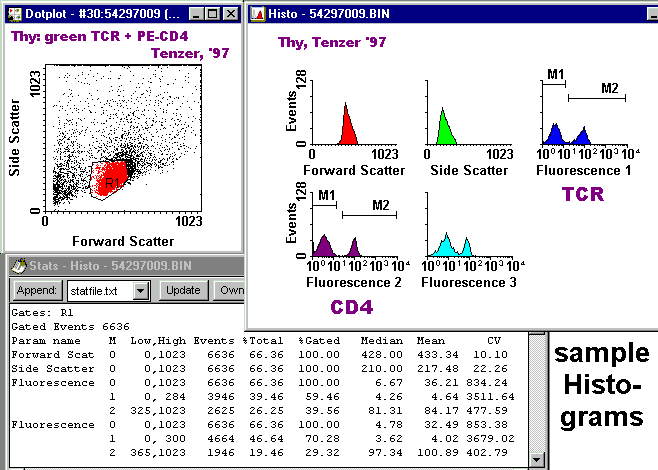Winmdi 29 Free Download Software

Feb 6, 2010 - 16-bit Windows application and reads most FCS 2.0 compliant files known from most. What is new in official WinMDI 2.8 software version? You may download wm29w98.exe directly, estimated download time by ISDN. Research and Innovation. Flow Cytometry Analysis Software. There are varieties of free flow cytometry analysis software. WinMDI is the most popular one.
This article has been and can now be. Public peer review comments can be seen Kieran O'Neill 1,2,†, Nima Aghaeepour 1,2,†, Josef Špidlen 1, Ryan Brinkman 1,4* 1Terry Fox Laboratory, BC Cancer Agency, Vancouver, BC, Canada 2Bioinformatics Graduate Program, University of British Columbia, Vancouver, BC, Canada 3Department of Medical Genetics, University of British Columbia, British Columbia, Canada † Co-lead authors.
* Corresponding author, email: rbrinkman@bccrc.ca is the application of to data, which involves storing, retrieving, organizing and analyzing flow cytometry data using extensive computational resources and tools. Flow cytometry bioinformatics requires extensive use of and contributes to the development of techniques from.
Flow cytometry and related methods allow the quantification of multiple independent on large numbers of single.  The rapid growth in the multidimensionality and throughput of flow cytometry data, particularly in the 2000s, has led to the creation of a variety of computational analysis methods, data standards, and public databases for the sharing of results. Computational methods exist to assist in the preprocessing of flow cytometry data, identifying cell populations within it, matching those cell populations across samples, and performing diagnosis and discovery using the results of previous steps. For preprocessing, this includes compensating for spectral overlap, data onto scales conducive to visualization and analysis, assessing data for quality, and data across samples and experiments. For population identification, tools are available to aid traditional manual identification of populations in two-dimensional (gating), to use to aid gating, and to find populations automatically in higher dimensional space in a variety of ways. It is also possible to characterize data in more comprehensive ways, such as the density-guided technique known as probability binning, or by combinatorial gating.
The rapid growth in the multidimensionality and throughput of flow cytometry data, particularly in the 2000s, has led to the creation of a variety of computational analysis methods, data standards, and public databases for the sharing of results. Computational methods exist to assist in the preprocessing of flow cytometry data, identifying cell populations within it, matching those cell populations across samples, and performing diagnosis and discovery using the results of previous steps. For preprocessing, this includes compensating for spectral overlap, data onto scales conducive to visualization and analysis, assessing data for quality, and data across samples and experiments. For population identification, tools are available to aid traditional manual identification of populations in two-dimensional (gating), to use to aid gating, and to find populations automatically in higher dimensional space in a variety of ways. It is also possible to characterize data in more comprehensive ways, such as the density-guided technique known as probability binning, or by combinatorial gating.
Finally, diagnosis using flow cytometry data can be aided by techniques, and discovery of new cell types of biological importance by high-throughput statistical methods, as part of pipelines incorporating all of the aforementioned methods., and are also key parts of flow cytometry bioinformatics. Data standards include the widely adopted Flow Cytometry Standard (FCS) defining how data from cytometers should be stored, but also several new standards under development by the International Society for Advancement of Cytometry (ISAC) to aid in storing more detailed information about experimental design and analytical steps. Open data is slowly growing with the opening of the CytoBank database in 2010, and FlowRepository in 2012, both of which allow users to freely distribute their data, and the latter of which has been recommended as the preferred repository for MIFlowCyt-compliant data by ISAC. Open software is most widely available in the form of a suite of packages, but is also available for web execution on the platform. Schematic diagram of a flow cytometer, showing focusing of the fluid sheath, laser, optics (in simplified form, omitting focusing), photomultiplier tubes (PMTs), analogue-to-digital converter, and analysis workstation.
- суббота 06 апреля
- 87